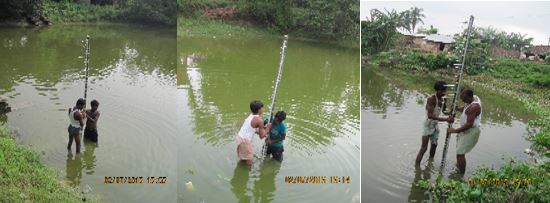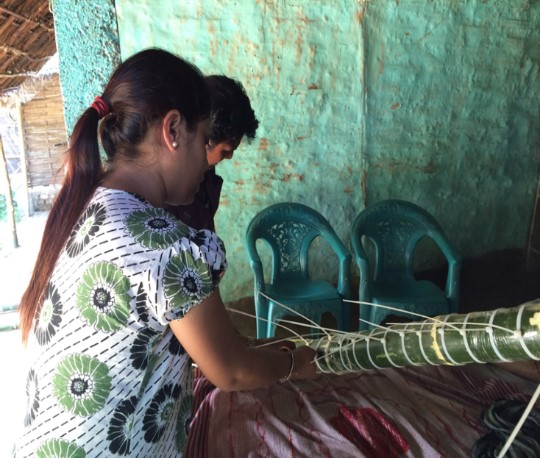The project team have now completed the installation of staffing gauges in a number of ponds in the Saptari and Madhubani study villages. These staffing gauges will be read each week, so that a time series of data can be compiled to give us more information about how much water is in storage throughout the seasons.
Sophisticated electronic pressure transducers or rotary encoders can be used to measure the water depth to a high level of accuracy, however this technology also requires power and maintenance, and comes at significant cost. For this project a simple solution was chosen to collect weekly data by visual observation.
Locally available lengths of bamboo were cut into pieces according to the depth of the pond. A measuring tape was then attached to the bamboo with cable zip ties to highlight measurements throughout the scale. Small zip ties were connected at 2.5 cm increments and a longer ties at 5 cm increments to allow easier reading of the depth from a distance.
The weekly depth readings are being collected and will be captured and stored in the project database for analysis throughout the project.
To date, eight ponds have been instrumented in Saptari (five in Koiladi and three in Khoksar Parbaha) and eight ponds in Madhubani (five in Mauahi and three in Bhagwatipur).








good job